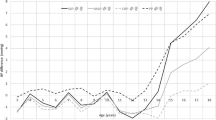Abstract
Patients with metabolic syndrome who present with vascular, metabolic, or bone disorders of recent onset, are difficult to control, or are progressively deteriorating are potentially linked to cortisol excess. The aim of the study is to evaluate the prevalence of occult Cushing's syndrome (CS) in metabolic syndrome patients. Thirty women with metabolic syndrome were chosen from Endocrinology clinic El Kasr El Ani without any phonotypical features of Cushing’s syndrome. All patients were subjected to the following: full history taking with full clinical evaluation and laboratory tests including fasting and pp blood sugar, lipid profile, and renal and liver function tests. Calculation of body mass index with measurement of waist circumference and overnight 1 mg dexamethasone suppression test were done. Among the 30 patients who participated in the study, three patients (10 %) did not show positive dexamethasone suppression test (non-suppressed group = subclinical or occult Cushing’s syndrome patients), and the rest of the patients (27) showed positive test (suppressed group). A relatively high prevalence of occult CS was found in our study. Further studies are needed to evaluate the impact of the cure of occult CS in patients with metabolic syndrome. Such studies might provide a rationale for systematic screening of occult CS in this population. Thus, it would be beneficial since it will reduce the period of time spent in the atherosclerotic, catabolic, and thrombotic milieu of hypercortisolism.

Similar content being viewed by others
References
Alberti K, Eckel R, Grundy S et al (2009) Harmonizing the metabolic syndrome. A joint interim statement of the International Diabetes Federation Task Force on Epidemiology and Prevention; National Heart, Lung, and Blood Institute; American Heart Association; World Heart Federation; International Atherosclerosis Society; and International Association for the Study of Obesity. Circulation 120:1640–1645
Alexander C, Landsman P, Teutsch S et al (2003) NCEP-defined metabolic syndrome, diabetes, and prevalence of coronary heart disease among NHANES III participants age 50 years and older. Diabetes 52:1210–1214
Angeli A, Terzolo M (2002) Adrenal incidentaloma—a modern disease with old complications [editorial comment]. J Clin Endocrinol Metab 87:4869–4871
Boscaro M, Barzon L, Fallo F, Sonino N (2001) Cushing's syndrome. Lancet 357:783–791
Carroll T, Raff H, Findling J (2009) Late-night salivary cortisol for the diagnosis of Cushing syndrome: a meta-analysis. Endocr Pract 15:335–342
Catargi B, Rigalleau V, Poussin A et al (2003) Occult Cushing’s syndrome in type-2 diabetes. J Clin Endocrinol Metab 88:5808–5813
Chiodini I, Guglielmi G, Battista C et al (2004) Spinal volumetric bone mineral density and vertebral fractures in female patients with adrenal incidentalomas: the effects of subclinical hypercortisolism and gonadal status. J Clin Endocrinol Metab 89:2237–2241
Chiodini I, Torlontano M, Scillitani A et al (2005) Association of subclinical hypercortisolism with type 2 diabetes mellitus: a case–control study in hospitalized patients. Eur J Endocrinol 153:837–844
Grumbach M, Biller B, Braunstein G et al (2003) Management of the clinically inapparent adrenal mass (incidentaloma). Ann Intern Med 138:424–429
Minetto M, Reimondo G, Osella G et al (2004) Bone loss is more severe in primary adrenal than in pituitary dependent Cushing’s syndrome. Osteoporos Int 15:855–861
Nieman LK, Biller BM, Findling JW et al (2008) The diagnosis of Cushing's syndrome: an Endocrine Society Clinical Practice Guideline. J Clin Endocrinol Metab 93:1526–1540
Pivonello R, Faggiano A, Lombardi G, Colao A (2005) The metabolic syndrome and cardiovascular risk in Cushing's syndrome. Endocrinol Metab Clin N Am 34:327–339
Rosane N, Dan N, Caroline M et al (2002) Overnight dexamethasone suppression test: a reliable screen for Cushing’s syndrome in the obese. Obes Res 10:1217–1221
Taniguchi T, Hamasaki A, Okamoto M (2008) Subclinical hypercortisolism in hospitalized patients with type 2 diabetes mellitus. Endocr J 55:429–432
Tauchmanova L, Rossi R, Nuzzo V et al (2001) Bone loss determined by quantitative ultrasonometry correlates inversely with disease activity in patients with endogenous glucocorticoid excess due to adrenal mass. Eur Endocrinol 145:241–247
Terzolo M, Bovio S, Pia A et al (2005) Midnight serum cortisolas a marker of increased cardiovascular risk in patients with a clinically inapparent adrenal adenoma. Eur J Endocrinol 153:307–315
Terzolo M, Osella G, Ali A et al (2006) Subclinical Cushing’s syndrome in adrenal incidentaloma. Clin Endocrinol 48:89–97
Terzolo M, Stigliano A, Chiodini I, Loli P, Furlani L et al (2011) AME position statement on adrenal incidentaloma. Eur J Endocrino 164:851–870
Walker BR (1996) Abnormal glucocorticoid activity in subjects with risk factors for cardiovascular disease. Endocr Res 22:701–708
Young W (2007) Clinical practice. The incidentally discovered adrenal mass. N Engl J Med 356:601–610
Author information
Authors and Affiliations
Corresponding author
Rights and permissions
About this article
Cite this article
Mansour, M.M., Salam, R.F. & Mogy, F.E. Subclinical hypercorticism in patients with metabolic syndrome. Comp Clin Pathol 24, 223–228 (2015). https://doi.org/10.1007/s00580-013-1717-5
Received:
Accepted:
Published:
Issue Date:
DOI: https://doi.org/10.1007/s00580-013-1717-5




